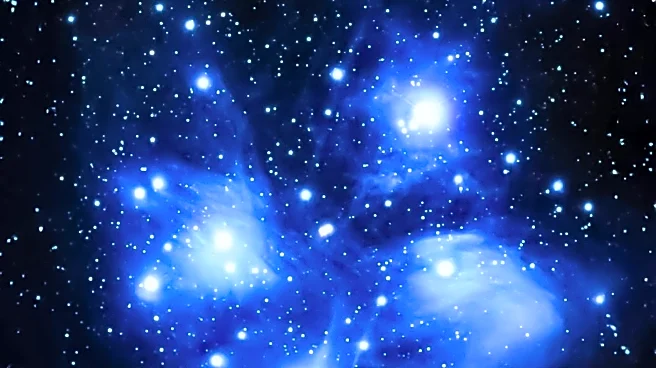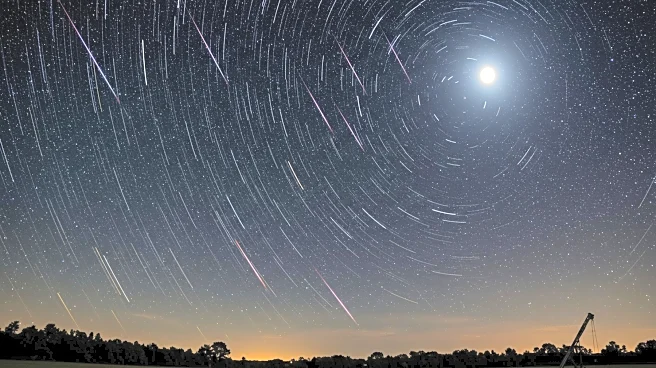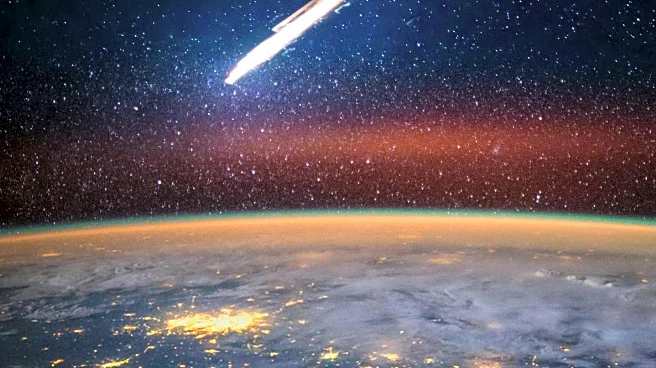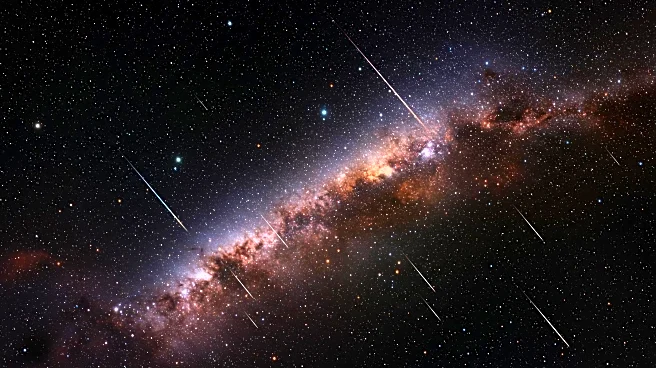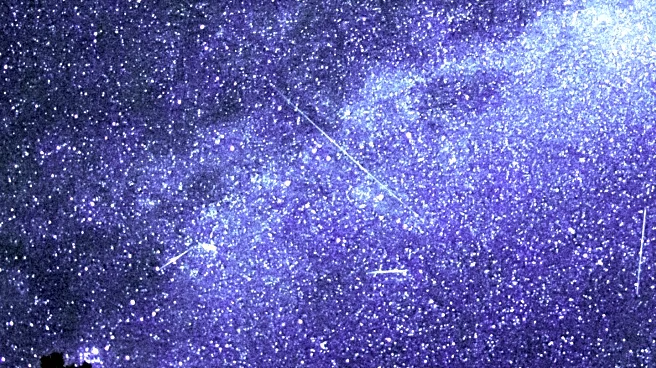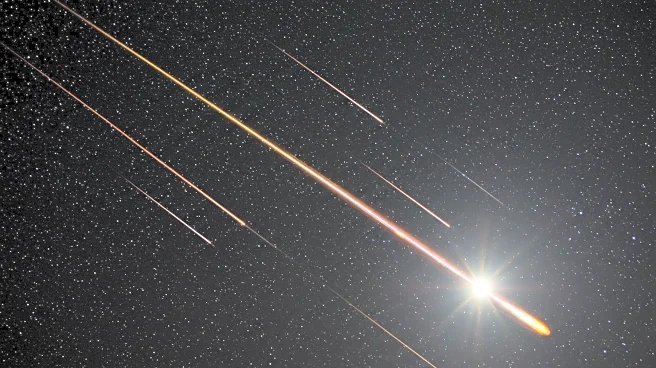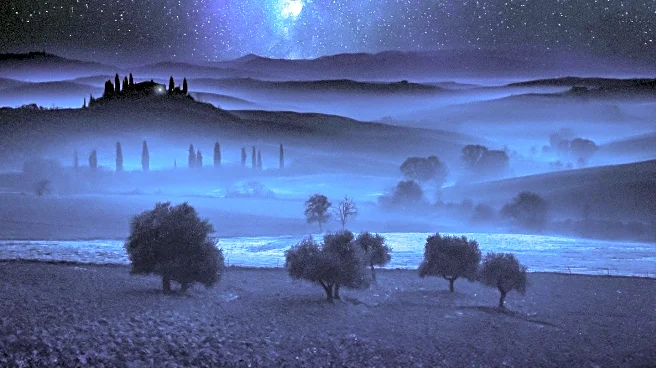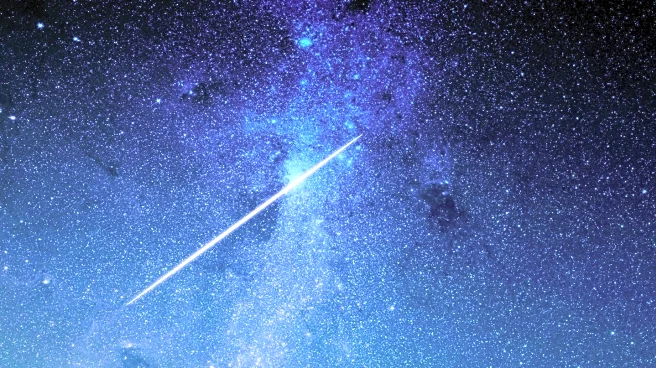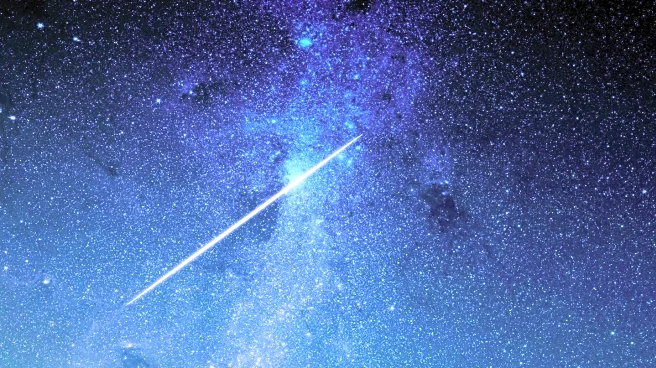What's Happening?
The Wild Duck Cluster, also known as M11, is prominently visible in the night sky, offering a spectacular view for astronomy enthusiasts. Located in the constellation Scutum, this open star cluster is observable approximately two hours after sunset. M11 is estimated to be around 250 million years old and contains nearly 3,000 stars, collectively shining at a magnitude of 5.8. The cluster spans an area roughly half the size of the full Moon and can be seen with binoculars or small telescopes. Its name originates from its visual resemblance to a flock of birds in flight, as noted by astronomer William Henry Smyth. The cluster is positioned about 40° high in the south, near the tail feathers of Aquila the Eagle.
Why It's Important?
The visibility of the Wild Duck Cluster provides an excellent opportunity for amateur astronomers and stargazers to observe a significant celestial feature. This event highlights the accessibility of astronomy to the public, encouraging interest and education in the field. Observing such clusters can enhance understanding of star formation and the dynamics of open clusters. The event also underscores the importance of preserving dark skies for astronomical observations, which can be threatened by urban light pollution.
What's Next?
As the Wild Duck Cluster remains visible, astronomy clubs and enthusiasts may organize viewing events to capitalize on this opportunity. Educational institutions might incorporate this event into their curriculum, using it as a practical example to teach students about star clusters and their characteristics. Additionally, the visibility of M11 could inspire further research and observation projects, contributing to the broader field of astronomy.
Beyond the Headlines
The observation of the Wild Duck Cluster can foster a deeper appreciation for the natural world and the universe beyond Earth. It may also prompt discussions on the cultural significance of star clusters and their historical interpretations by different civilizations. Furthermore, this event can serve as a reminder of the importance of scientific literacy and the role of astronomy in expanding human knowledge.
